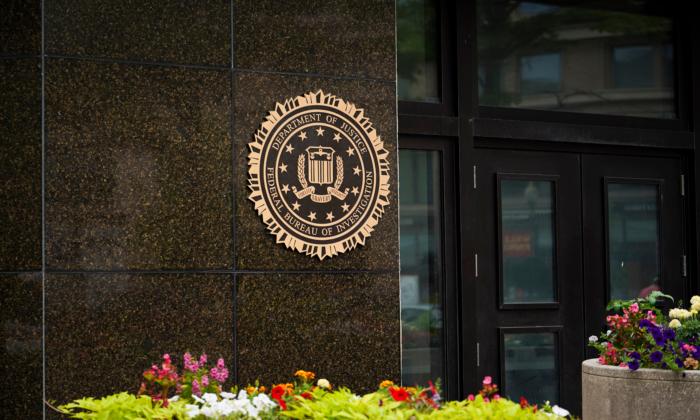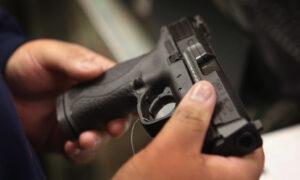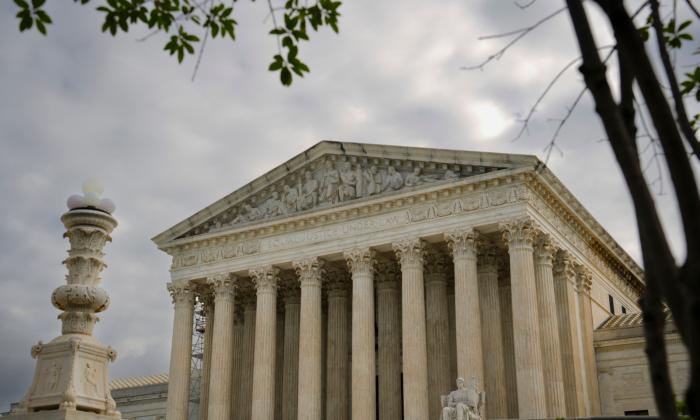Commentary
Americans are constantly debating policing and gun control. But to discuss these issues, we have to depend on government crime data. Unfortunately, politics has infected the data handling of agencies such as the FBI and the Centers for Disease Control and Prevention (CDC).
Last year, the CDC became the center of controversy when it removed its estimates of defensive gun uses from its website at the request of gun control organizations. For nearly a decade, the CDC cited a 2013
National Academies of Sciences report showing that the annual number of people using guns to stop crime ranged from about 64,000 to 3 million. The CDC website listed the upper figure at 2.5 million.
Mark Bryant, who runs the Gun Violence Archive,
wrote to CDC officials after a meeting last year that the 2.5 million number “has been used so often to stop [gun control] legislation.” The CDC’s estimates were subsequently taken down and now lists no numbers.
The FBI is also susceptible to political pressure. Up until January 2021, I worked in the U.S. Department of Justice as the senior adviser for research and statistics, and part of my job was to evaluate
the FBI’s active shooting reports. I showed the bureau that many cases were
missing and that others had been misidentified. Yet the FBI continues to report that armed citizens stopped only 14 of the 302 active shooter incidents that it identified for the period 2014–22. The correct rate is almost eight times higher. And if we limit the discussion to places where permit holders were allowed to carry, the rate is 11 times higher.
The
FBI defines active shooter incidents as those in which an individual actively kills or attempts to kill people in a populated, public area. But it does not include shootings that are deemed related to other criminal activity, such as robbery or fighting over drug turf. Active shootings may involve just one shot being fired at just one target, even if the target isn’t hit.
To compile its list, the FBI hired academics at the Advanced Law Enforcement Rapid Response Training Center at Texas State University. Police departments don’t collect data, so the researchers had to find news stories about these incidents.
It isn’t surprising that people will miss cases or occasionally misidentify them when using news stories, but the FBI was unwilling to fix its errors when I pointed them out. My organization, the Crime Prevention Research Center (CPRC), has found many more missed cases and is keeping an
updated list. Back in 2015, I
published a list of missed cases in a criminology publication.
We found these cases on a budget of just a few thousand dollars. Although we found that armed citizens had stopped eight times as many cases as the FBI claims, I make no assertion that we unearthed all of these stories. It is quite possible that the news media itself never covers many such incidents.
While the FBI claims that just 4.6 percent of active shootings were stopped by law-abiding citizens carrying guns, the percentage that I found was 35.7 percent. I am more confident that we have identified a higher share of recent cases, and our figure for 2022 was even higher—41.3 percent.
The FBI doesn’t differentiate between law-abiding citizens stopping attacks where guns are banned and where they are allowed, but you can’t expect law-abiding citizens to stop attacks where it is illegal to carry guns. In places where law-abiding citizens are allowed to carry firearms, the percentage of active shootings that were stopped is 51 percent. For 2022, that figure is a remarkable 63.5 percent.
In order to follow the FBI’s definition, we excluded 27 cases because a law-abiding person with a gun stopped the attacker before he was able to get off a shot.
In an email I received in 2015, a bureau official
acknowledged that “the FBI did not come across this incident during its research in 2015, but it does meet the FBI’s active-shooter definition.” The official noted they will miss active-shooter cases because the reports “are limited in scope.” Yet the FBI database never added the incident.
When The Washington Post’s Glenn Kessler
reached out to the FBI for comments on our earlier work up through 2021, they emailed: “We have no additional information to provide other than what is provided within the active shooter reports on our website.”
However, a researcher at Texas State University did respond to two of the cases we had identified in our earlier work. He argued that one case involving a shooting at a dentist’s office was excluded because it involved a domestic dispute and another at a strip club because it was a “retaliation murder.” We list
14 examples where the FBI list includes shooting resulting from domestic disputes and
three others where a shooting started after someone was denied entry to a lounge or bar. So why the double standard? Domestic disputes and “retaliation murders” are only included when they don’t involve permit holders stopping the attacks.
The FBI data on active shootings are missing so many defensive gun uses that it’s hard to believe it isn’t intentional. Errors can happen, but the failure to fix past reports shows a troubling disregard for the truth. The reality is that armed, law-abiding citizens are unsung guardian angels.
Views expressed in this article are opinions of the author and do not necessarily reflect the views of The Epoch Times.







